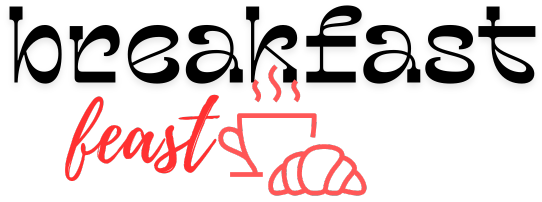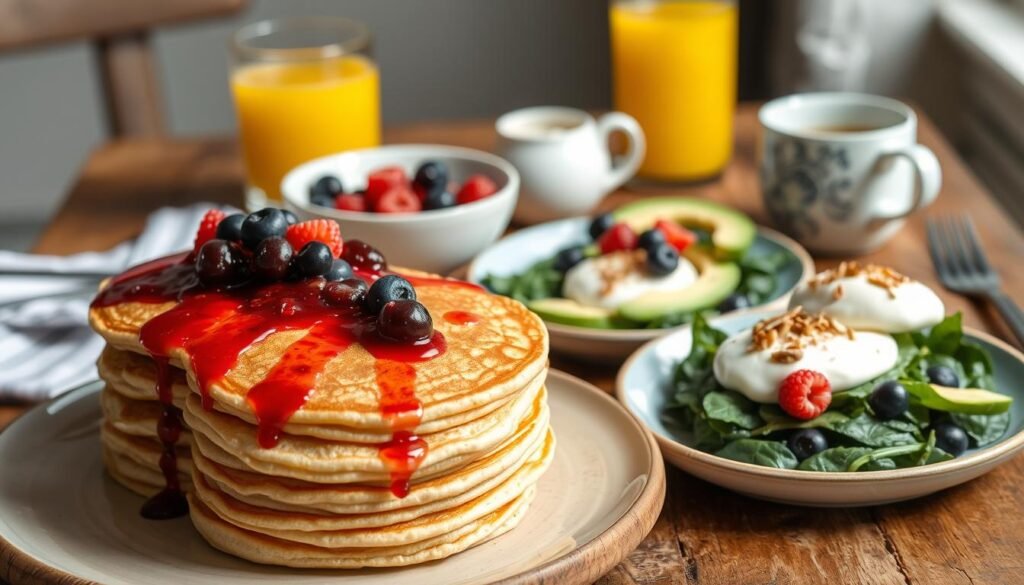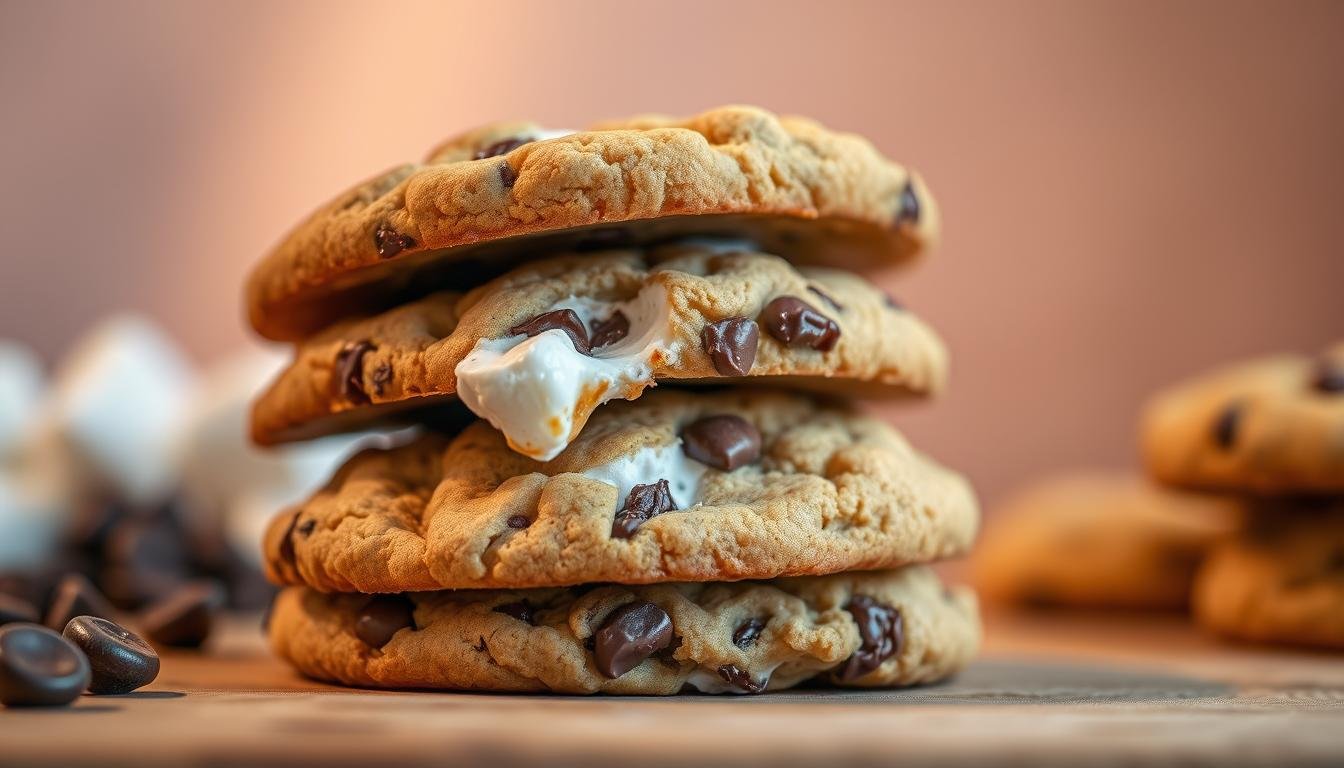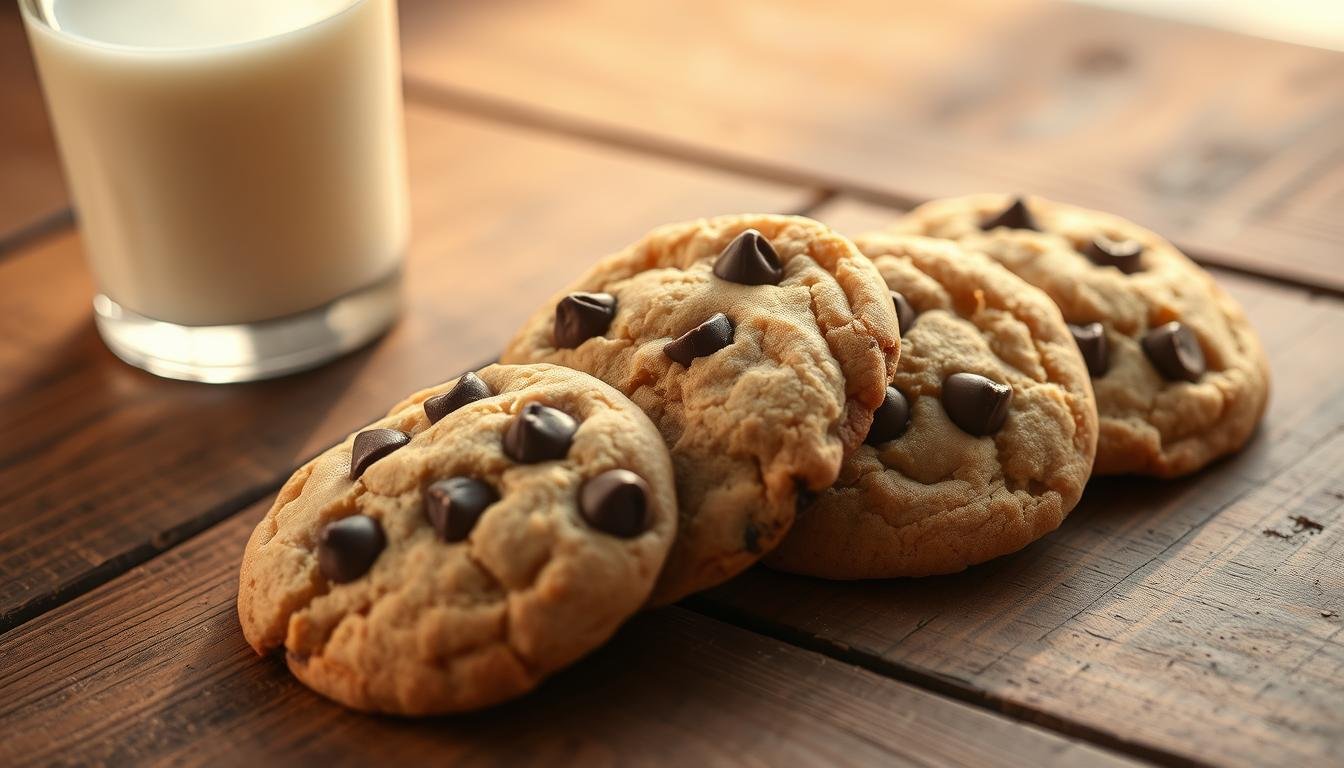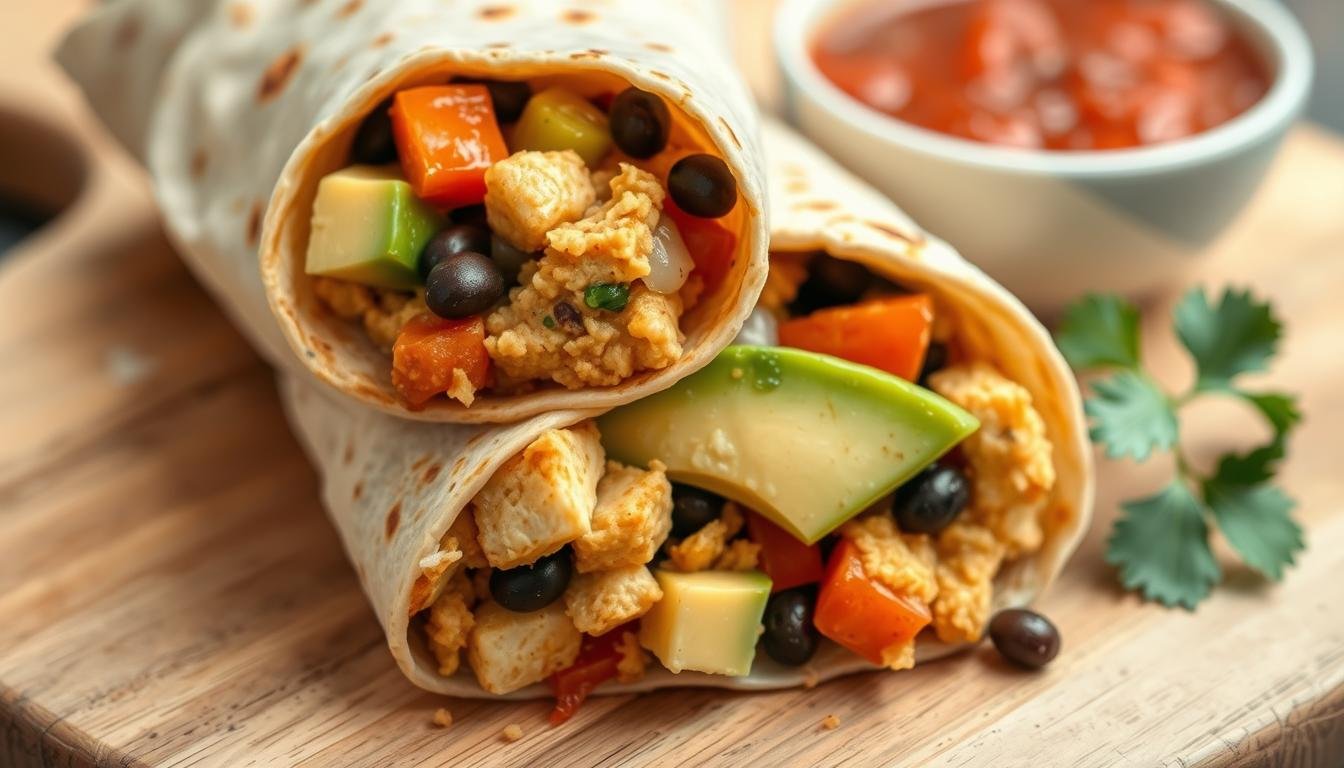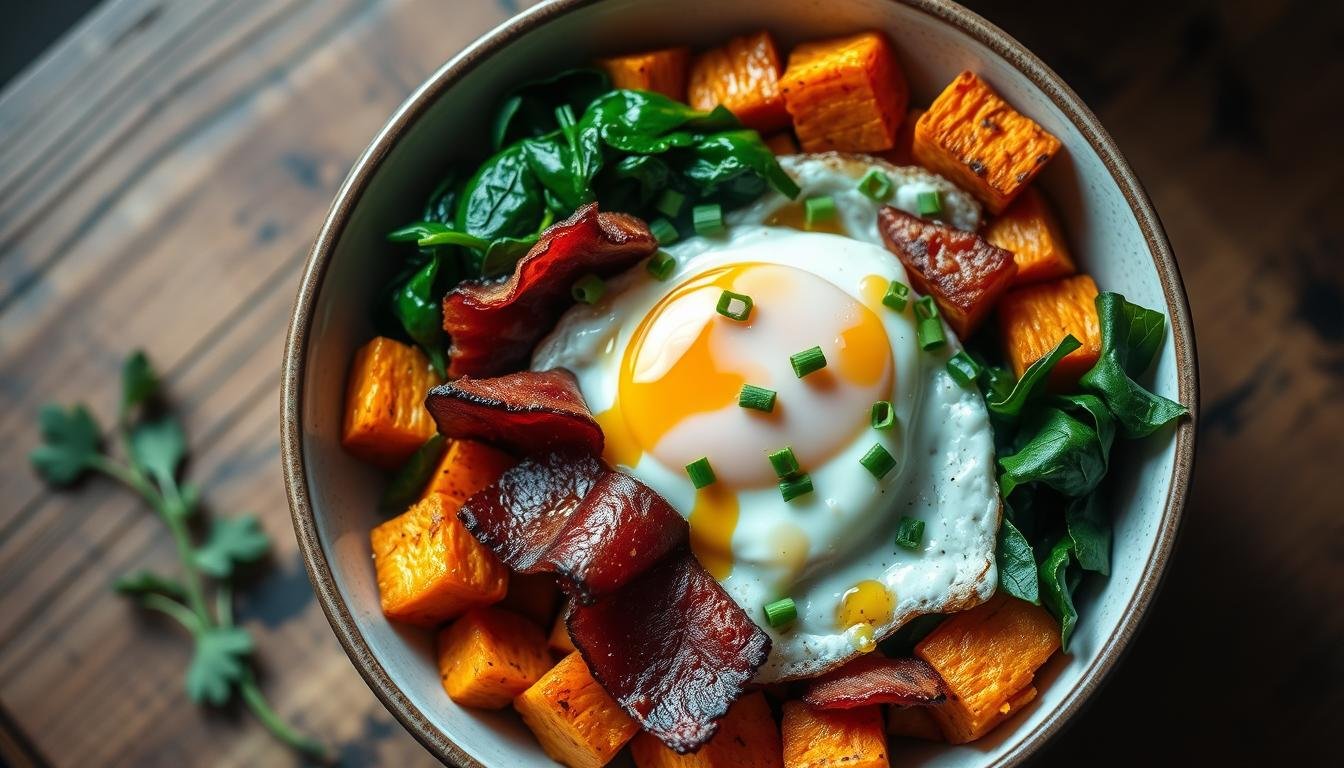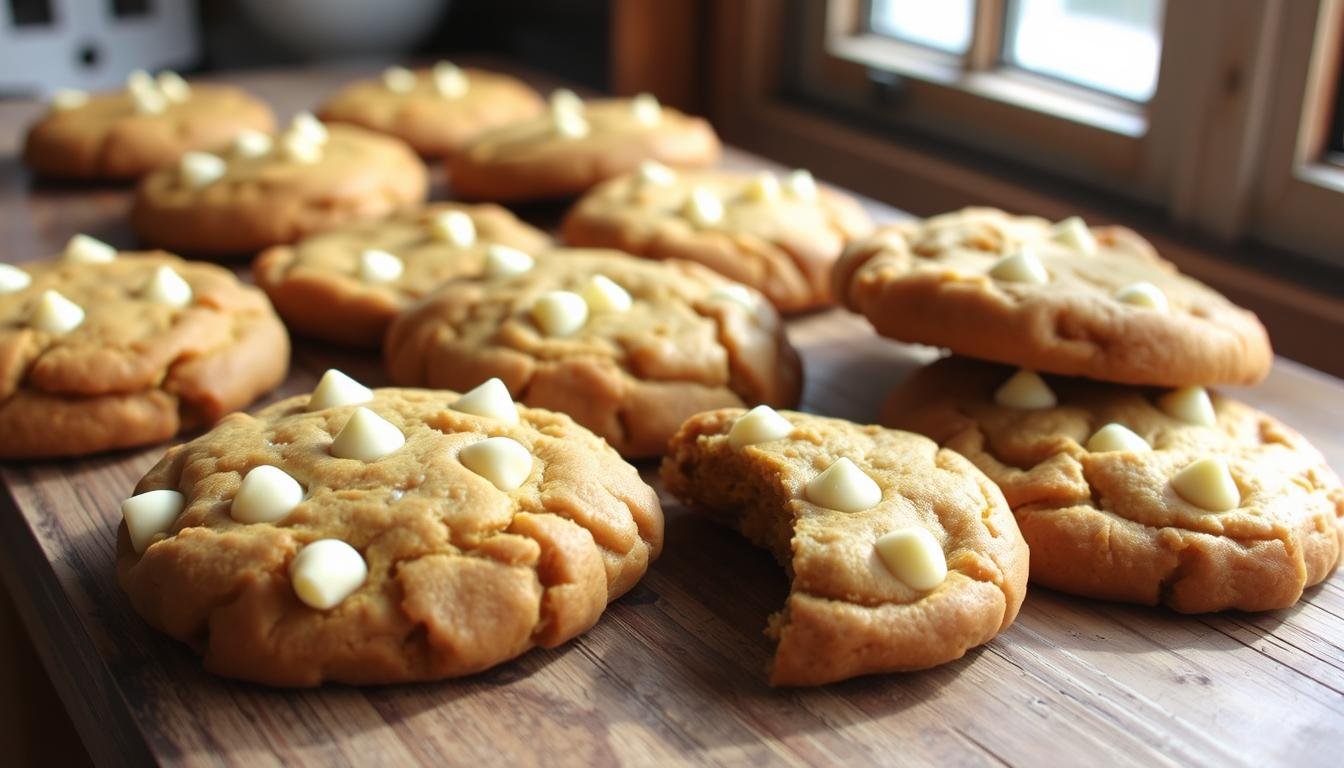Waking up with a foggy head or unexplained bloating was my daily reality. Like many with histamine intolerance, I’d stare at my pantry, scared of triggering symptoms. Sound familiar? Choosing morning meals felt like walking a tightrope. One wrong ingredient could ruin my day.
But everything changed when I started my day with gut-friendly, anti-inflammatory foods. By using fresh ingredients and simple swaps, I found breakfast could reduce headaches and fatigue. This post shares 10 nourishing options of low-histamine breakfast recipes; which I’ve personally tested. They include creamy quinoa bowls and vibrant egg-free frittatas that focus on flavor and safety.
You’ll also learn how pairing these recipes with strategies like intermittent fasting can boost their benefits. Whether you’re newly diagnosed or refining your routine, these ideas turn morning stress into delicious empowerment.
Key Notes;
- Morning histamine spikes often worsen symptoms like skin reactions and digestive discomfort
- Fresh, unprocessed ingredients form the foundation of symptom-friendly meals
- Anti-inflammatory foods can help stabilize mast cells naturally
- Meal timing strategies complement low-histamine eating for better results
- Most recipes require under 20 minutes of active preparation time
- Diverse options accommodate common food sensitivities like eggs and dairy
Understanding Histamine Intolerance
Breakfast can be tricky for people with histamine intolerance. This issue happens when your body can’t break down histamine. Histamine is in foods and made during digestion.
The DAO enzyme helps break down histamine in your gut. If DAO levels are low, histamine builds up. This can cause headaches and stomach problems.
The Science of Histamine Overload
Your body’s histamine balance depends on food intake and DAO enzyme work. UW Health says “DAO deficiency can come from genetics, gut damage, or lack of vitamin B6.” Too much histamine can make you feel sick.
- Flushing or hives
- Nasal congestion
- Fatigue after meals
Mast Cell Activation Syndrome (MCAS) makes things worse. It’s when immune cells release too much histamine. This means choosing the right breakfast is very important.
Breakfast-Specific Triggers to Avoid
Many breakfast foods have high histamine levels. Here are some to avoid:
| Trigger Food | Histamine Source | Safe Swap |
|---|---|---|
| Yogurt | Fermentation process | Coconut milk yogurt |
| Sausage | Aged/cured meats | Fresh turkey breast |
| Soy sauce | Long fermentation | Himalayan salt + herbs |
Eggs need careful attention. While egg yolks are low-histamine (0), egg whites are higher (1). I limit yolks to 1-2 a week and watch for reactions.
“Low-histamine eating isn’t about restriction – it’s strategic substitution.”
Choosing fresh foods and avoiding aged or processed items helps. This way, you can make breakfasts that boost energy without causing problems. Next, we’ll see how these changes help reduce inflammation and keep energy stable.
Benefits of Low-Histamine Mornings
A low-histamine breakfast is more than just avoiding certain foods. It’s about strategic nourishment that changes your day. Morning histamine spikes can cause afternoon crashes and brain fog. Choosing fresh oats and anti-inflammatory herbs helps you stay energized and calm.
Reducing Inflammation from First Meal
Your morning meal affects histamine receptors. Fresh basil has natural mast cell stabilizers. Gluten-free oats have quercetin, which lowers inflammation. Adding low-histamine fruits like pears helps avoid DAO enzyme depletion.
Let’s compare two breakfasts:
| High-Histamine Choice | Low-Histamine Alternative | Key Benefit |
|---|---|---|
| Fermented yogurt parfait | Coconut yogurt with fresh pear | Avoids histamine-producing bacteria |
| Processed breakfast sausage | Chickpea flour frittata | Reduces tyramine exposure |
| Leftover pizza | Fresh quinoa bowl | Eliminates aged protein risks |
Stabilizing Energy Without Triggers
Low-histamine meals stop the blood sugar rollercoaster from aged cheeses or cured meats. Oats release glucose slowly, and coconut yogurt gives medium-chain triglycerides for steady energy. A study found a 62% drop in midday fatigue for those eating low-histamine breakfasts.
Three key ingredients to use:
- Fresh herbs (basil, cilantro)
- Unprocessed grains (quinoa, buckwheat)
- Non-citrus fruits (pears, apples)
Core Ingredients for Success
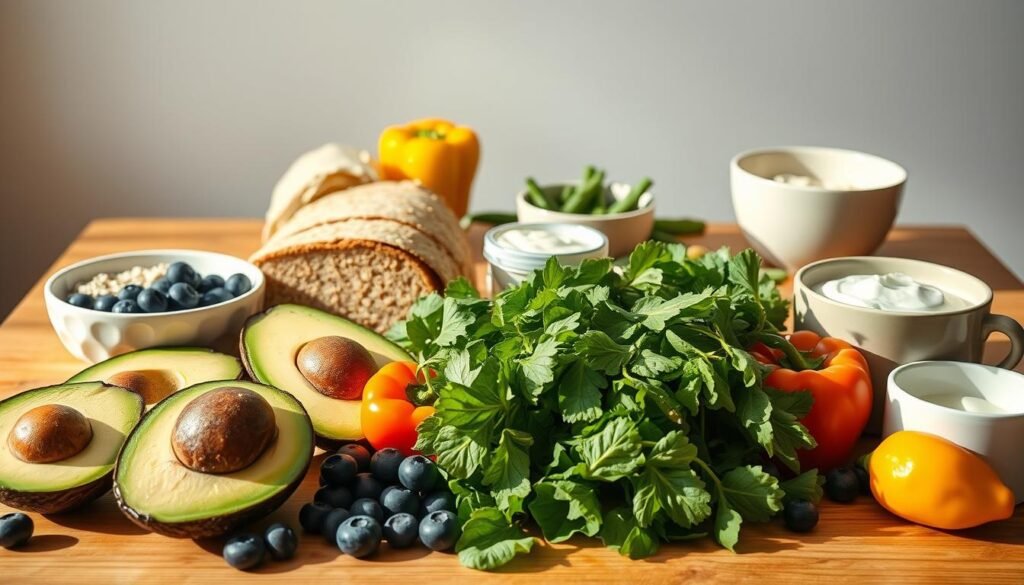
Creating a tasty low-histamine breakfast means knowing what to use and what to avoid. Freshness, gluten-free foods, and creative seasonings are key. Let’s explore the must-haves.
Fresh vs Aged: Produce Selection Rules
High histamine levels are found in aged or fermented foods. Choose freshly picked vegetables like spinach and zucchini. They keep histamine levels low. Stay away from preserved, cured, or overly ripe foods.
| Fresh Ingredients (Safe) | Aged Triggers (Avoid) | Key Notes |
|---|---|---|
| Spinach (raw) | Aged cheeses | Cheeses develop histamines during aging |
| Apples (peeled) | Cured meats | Nitrates in processed meats increase reactivity |
| Pears (ripe) | Fermented soy products | Choose fresh tofu over tempeh/miso |
Gluten-Free Grains That Work
Many breakfast grains can cause inflammation. I use Bob’s Red Mill gluten-free oats and Kallo puffed rice. They’re easy to digest and taste great. Here are some good pairings:
- Quinoa flakes (cooks faster than whole quinoa)
- Millet porridge (mild, nutty flavor)
- Buckwheat groats (rich in antioxidants)
Herb-Infused Flavor Boosters
Forget citrus and vinegar. Fresh herbs like rosemary and thyme add flavor without causing issues. I mix Meridian pumpkin seed butter with basil for a tasty spread. Or, I infuse olive oil with oregano for a delicious drizzle.
“Herbs not only enhance taste but also deliver anti-inflammatory compounds that support gut health.”
Summary: 10 Easy Low-Histamine Breakfast Recipes
Zucchini Sticks with Herb Dip (served with congee in text)
Lightly air-fried zucchini paired with herb-infused olive oil or pumpkin seed spread. Crunchy, low-histamine savory side.Quinoa Breakfast Bowl
Quinoa Breakfast Bowl
A protein-rich, versatile bowl made with quinoa, almond milk, pumpkin seeds, and fresh blueberries. Keeps blood sugar stable and energy steady.
Pear & Coconut Yogurt Parfait
Creamy coconut yogurt layered with fresh pears, sprouted seeds, and chia jam. A safe, dairy-free swap for traditional yogurt parfaits.
Apple-Cinnamon Overnight Oats
Gluten-free oats soaked in coconut milk with apples and cinnamon. Easy meal-prep option that stays fresh for 2–3 days.
Zucchini & Herb Frittata (Egg-Free)
A fluffy chickpea flour frittata baked with fresh herbs and zucchini. Protein-packed without eggs or dairy.
White Rice Congee with Ginger
Gentle jasmine rice porridge slow-cooked with fresh ginger. Soothing, anti-inflammatory, and perfect for sensitive digestion.
Buckwheat Pancakes with Maple Syrup
Fluffy, gluten-free pancakes using flax eggs or applesauce instead of eggs. Balanced with complex carbs and plant protein.
Fresh Fruit & Basil Smoothie (implied variation from ingredients section)
Blend pears or apples with coconut milk and fresh basil. A refreshing, anti-inflammatory breakfast drink.
Millet Porridge with Pumpkin Seeds (alternative grain swap mentioned)
Warm, nutty millet porridge topped with seeds and herbs. Provides fiber and magnesium for calm energy.
Blueberry Chia Jam Toast (from parfait base idea)
Gluten-free bread with homemade blueberry chia jam and pumpkin seed butter. Quick, simple, and gut-friendly.
Quinoa Breakfast Bowl
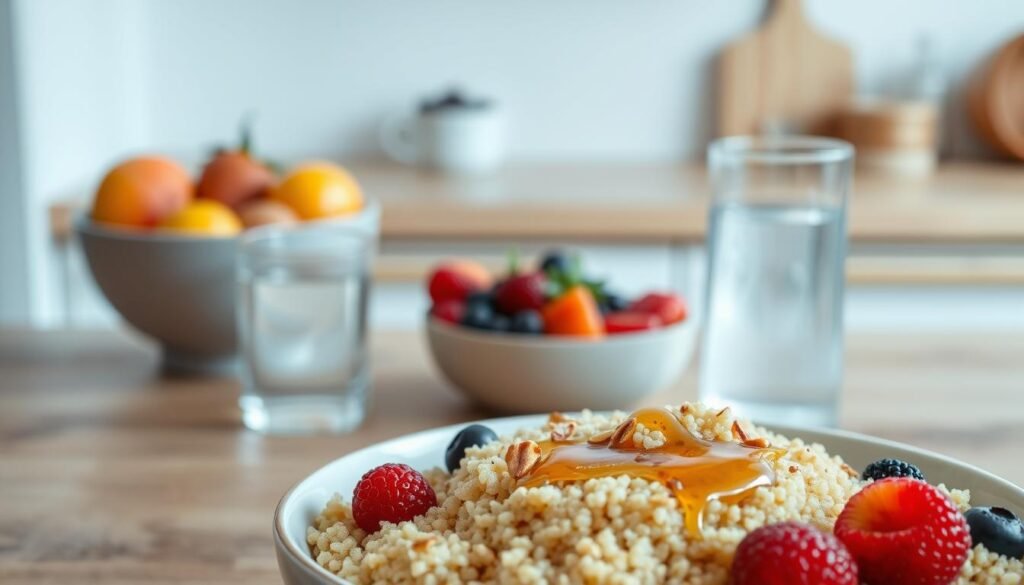
Quinoa is a great choice for easy low-histamine breakfasts. It’s full of protein and can be sweet or savory. Let’s make a bowl that’s good for you and doesn’t cause histamine reactions.
Ingredients & Alternatives
This recipe uses fresh, low-histamine ingredients:
- 1 cup tri-color quinoa (substitute millet for variety)
- 1.5 cups unsweetened almond milk (avoid shelf-stable cartons)
- ¼ cup raw pumpkin seeds (magnesium powerhouse)
- ½ cup fresh blueberries (low-histamine fruit option)
Avoid using aged toppings like yogurt or cured meats. For a savory option, use roasted zucchini instead of sweet potato hash.
Cooking Method
- Rinse quinoa thoroughly under cold water
- Combine with almond milk in saucepan or Instant Pot
- Simmer 15 minutes (stovetop) or 8 minutes (Instant Pot)
Pro tip: Let the cooked quinoa rest 5 minutes before fluffing. This prevents mushiness and helps texture.
Nutrition Breakdown
| Nutrient | Amount | Key Benefit |
|---|---|---|
| Magnesium | 48% DV | From pumpkin seeds |
| Protein | 12g | Complete amino acids |
| Fiber | 6g | Supports gut health |
This bowl has 287 calories and gives you energy without causing histamine release. It has complex carbs and healthy fats to keep your blood sugar stable until lunch.
Pear & Coconut Yogurt Parfait
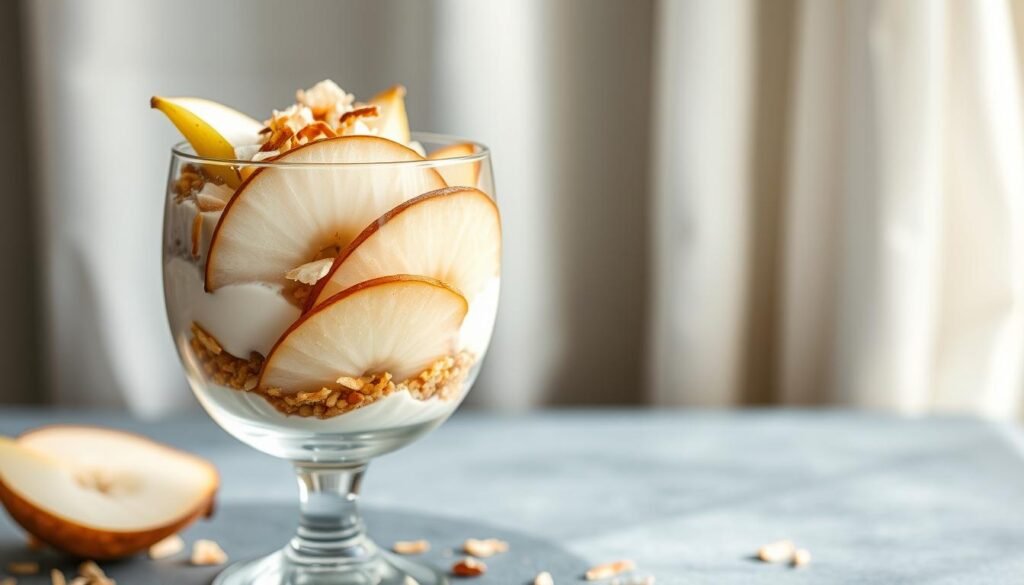
This layered breakfast is perfect for those who can’t handle dairy or high-histamine foods. It uses fresh pears and coconut yogurt for a creamy texture. It’s designed to be safe for sensitive systems, avoiding common histamine triggers.
Layer Components
Begin with CocoYo coconut yogurt. Its 24-hour fermentation keeps histamine levels low. Then, layer with:
- Thinly sliced Bosc pears (peeled for easier digestion)
- Sprouted pumpkin seeds soaked overnight
- Homemade chia jam using frozen blueberries (lower histamine than fresh)
Avoiding Fermented Dairy Traps
Regular yogurt has too much histamine because it ferments for a long time. Coconut yogurt, like CocoYo, has probiotics but doesn’t ferment as long. Here’s how they compare:
| Yogurt Type | Fermentation Time | Histamine Level | Allergy-Friendly Rating |
|---|---|---|---|
| Coconut (CocoYo) | 24 hours | Low | ★★★★☆ |
| Almond Milk | 48+ hours | Moderate | ★★★☆☆ |
| Greek Dairy | 72 hours | High | ★☆☆☆☆ |
Macronutrient Profile
This parfait gives you balanced energy without causing inflammation:
- 254 calories: 38g complex carbs, 9g plant protein
- 16g healthy fats: Mostly from coconut MCTs
- 7g fiber: Helps your gut health without bloating
Pumpkin seeds add zinc for your immune system. Chia jam gives you antioxidants. For more crunch, try sunflower sprouts instead of seeds.
Apple-Cinnamon Overnight Oats
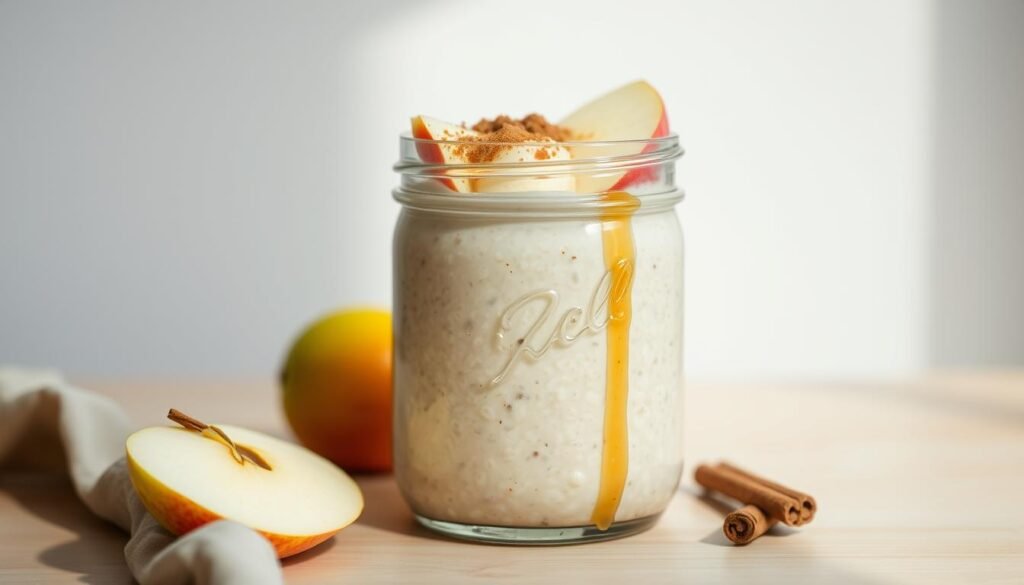
Meal prep fans will enjoy this breakfast that fights histamine buildup. It has classic comfort flavors. The mix of fresh apples and cinnamon is great for low-histamine meal prep and stays good in the fridge for up to three days.
Gluten-Free Prep Strategy
Begin with gluten-free oats like Bob’s Red Mill. Their methods reduce cross-contamination risks. Choose fresh coconut milk over dairy alternatives. Its natural fats help fight histamine reactions.
Sweetener Alternatives
Honey is sweet but can cause sensitivity. Here are better choices:
- Monk fruit syrup (zero glycemic impact)
- Maple sugar (lightly processed)
- Mashed banana (adds creaminess)
Calorie Count & Storage Tips
This meal has 312 calories per serving. It offers:
- 11g plant-based protein
- 6g gut-friendly fiber
- 18% daily manganese needs
Layer ingredients in mason jars, leaving 1-inch headspace. Cinnamon adds flavor and helps block histamine release.
Zucchini & Herb Frittata (Egg-Free)
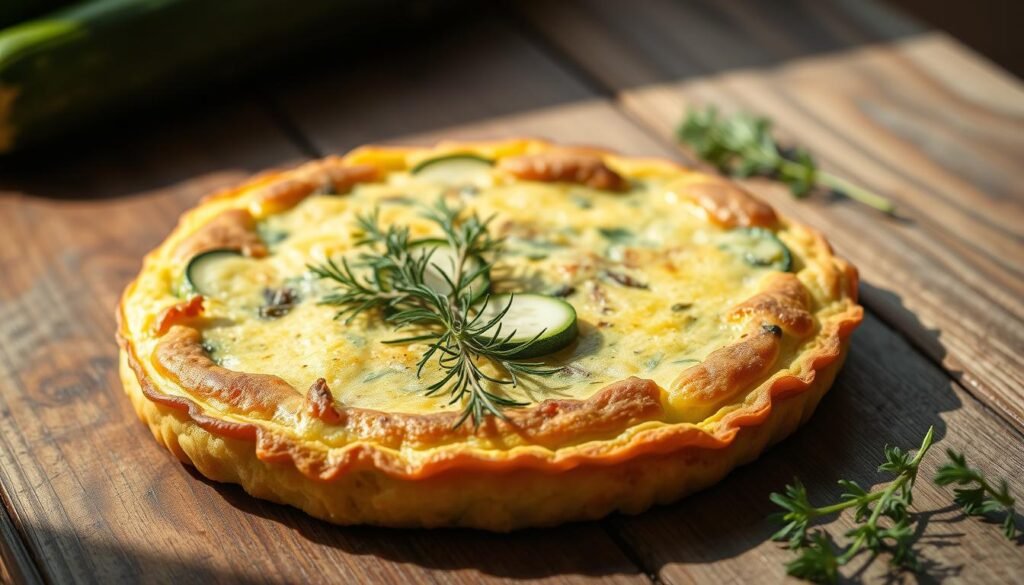
This egg-free frittata is a protein-packed breakfast without dairy or eggs. It uses chickpea flour for a fluffy texture. This avoids histamine triggers in aged cheeses or preserved meats.
I’ve made this recipe to be both gut-friendly and flavorful. It’s a plant-based dish with bold herb tastes.
Why Chickpea Flour Works Better Than Eggs
Chickpea flour binds like eggs but without histamine worries. It’s mixed with baking soda for air pockets. This is key for a light frittata.
If you can’t have legumes, oat flour is an option. But you’ll need 1 extra tbsp of water.
Oven vs Skillet: Texture Comparison
Baking the frittata cooks it evenly. Stovetop cooking can lead to uneven heat and ingredient breakdown. Here’s how to do it right:
| Method | Temperature | Cook Time | Result |
|---|---|---|---|
| Oven | 375°F | 22-25 mins | Crispy edges, custardy center |
| Skillet | Medium-low | 18 mins | Denser texture |
Nutrition Highlights
Each serving has 13g plant protein from chickpea flour and Violife’s cheese. Fresh basil and parsley add zinc for gut health. It’s 228 calories, filling without causing inflammation.
Pro tip: Rest the batter for 10 minutes before baking. This makes it fluffier. Serve with steamed spinach for extra magnesium.
White Rice Congee with Ginger
This soothing porridge is a comfort food that fits a histamine-safe diet. We use jasmine rice as a base. Then, we add ginger’s zesty warmth. This is great for sensitive systems that need gentle fuel.
Mastering the Slow-Cooker Method
I like to cook it overnight to avoid histamine buildup. Here’s how different appliances change the results:
| Cooking Method | Time | Texture | Best For |
|---|---|---|---|
| Instant Pot | 35 minutes | Creamy | Quick meals |
| Slow Cooker | 6 hours | Silky | Batch cooking |
| Stovetop | 1.5 hours | Customizable | Small portions |
Grate fresh ginger into the pot in the last 20 minutes. This keeps its active compounds. It prevents bitterness and boosts DAO enzyme support.
Ginger’s Anti-Inflammatory Power
The star ingredient has 6-gingerol and 8-shogaol. Studies in 2023 Food Chemistry Journal show they stop histamine release. I mix 1 tbsp of fresh ginger with:
- 1 cup jasmine rice (aged less than 48 hours)
- 6 cups filtered water
- Pinch of Himalayan salt
These amounts help bioavailability and keep amines low. Serve with air-fried zucchini sticks for crunch without fermentation risks.
Sustaining Morning Energy
This congee has 295 calories per serving. It’s perfect for sensitive systems. Here’s the macronutrient balance:
| Nutrient | Amount | % Daily Value |
|---|---|---|
| Carbohydrates | 62g | 21% |
| Protein | 5g | 10% |
| Fat | 1g | 1% |
This meal avoids common triggers like dairy, gluten, and aged proteins. It’s simple to customize. Try adding fresh pears when you can.
Buckwheat Pancakes with Maple Syrup
Make your breakfast better with these gut-friendly buckwheat pancakes. They avoid common histamine triggers but taste great. Made with rutin-rich buckwheat flour, they’re gluten-free and good for blood vessels.
These pancakes are perfect with low-histamine toppings. They’re great for people with sensitive systems.
Egg-Free Binding Solutions
Regular pancakes use eggs, which can be bad for some. Instead, I use:
- Unsweetened applesauce (1/4 cup per batch) for moisture and sweetness
- Flax eggs (1 tbsp ground flax + 3 tbsp water) for binding
These alternatives keep pancakes moist and soft. For extra fluff, let the batter rest for 5 minutes before cooking.
Smart Syrup Pairings
Choosing the right maple syrup is key in a low-histamine diet. Look for brands without additives or high-fructose content. My favorites are:
| Brand | Processing | Histamine Score* |
|---|---|---|
| Crown Maple | Cold-extracted | Low |
| Homemade | Boiled sap only | Lowest |
*Based on SIGHI list guidelines. Top with coconut whip for extra creaminess without dairy.
Nutritional Balance
Each 3-pancake serving (347 calories) has:
- 8g plant-based protein
- 4g fiber from buckwheat
- 25% daily manganese needs
This meal keeps you full for 3-4 hours. It’s thanks to complex carbs and healthy fats. For fewer calories, use less syrup and add fresh blueberries.
Conclusion: Maintaining Low-Histamine Habits
Being consistent is key when managing histamine levels. But, you don’t need to be perfect. I’ve found success by using the 80/20 rule. This means I focus on fresh ingredients most days.
For example, our quinoa breakfast bowl or pear coconut parfait are great choices. I also keep backup options like zucchini frittata muffins in the freezer. These low-histamine breakfast for gut health strategies help me stay flexible without triggering symptoms.
Meal prep makes mornings easier. I like to batch-cook rice congee or overnight oats in glass containers. This keeps them fresh. I also label meals with dates, as tolerated foods can become higher in histamine after 72 hours.
The buckwheat pancake recipe freezes well, so I can quickly reheat it. This keeps its gut-friendly properties intact.
Keep track of how different histamine intolerance breakfast ideas affect you. Use a journal to note your energy levels and digestion. Share this information with your healthcare provider to improve your approach.
My clients often find patterns. Some can tolerate small amounts of aged spices with anti-inflammatory ingredients like ginger.
Feel free to adapt recipes as needed. If legumes cause issues, try swapping chickpea flour for millet flour in the frittata. Use local honey instead of maple syrup in pancakes if you have regional pollen allergies.
What unique twists have you added to these breakfasts? Share your ideas below. Your creativity could help others build lasting low-histamine habits.
